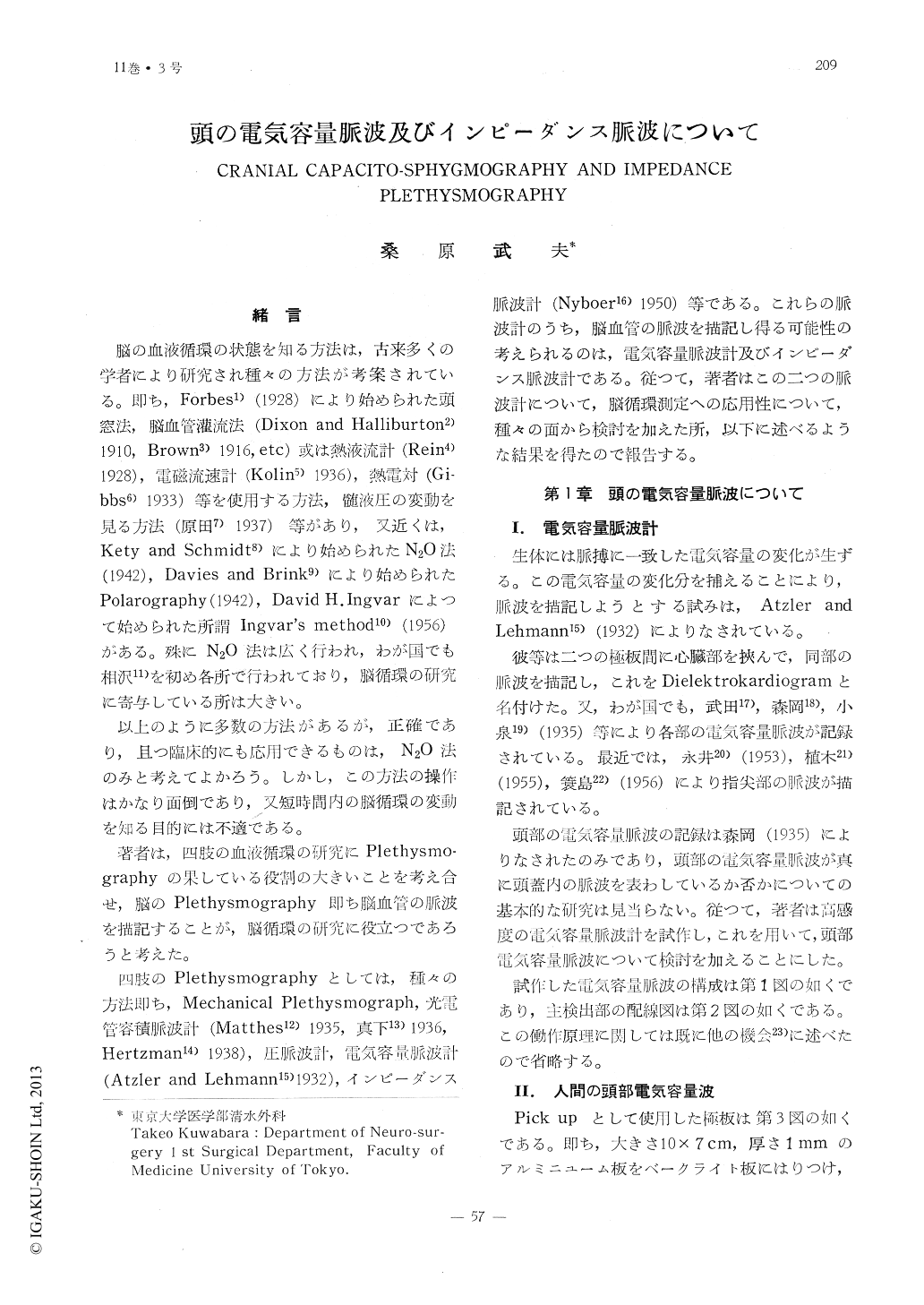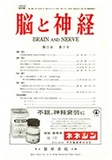Japanese
English
- 有料閲覧
- Abstract 文献概要
- 1ページ目 Look Inside
緒言
脳の血液循環の状態を知る方法は,古来多くの学者により研究され種々の方法が考案されている。即ち,Forbes1)(1928)により始められた頭窓法,脳血管灌流法(Dixon and Halliburton2)1910,Brown3)1916,etc)或は熱液流計(Rein4)1928),電磁流速計(Kolin5)1936),熱電対(Gi-bbs6)1933)等を使用する方法,髄液圧の変動を見る方法(原田7)1937)等があり,又近くは,Kety and Schmidt8)により始められたN20法(1942),Davies and Brink9)により始められたPolarography (1942),David H.Ingvarによつて始められた所謂Ingvar's method10)(1956)がある。殊にN2O法は広く行われ,わが国でも相沢11)を初め各所で行われており,脳循環の研究に寄与している所は大きい。
以上のように多数の方法があるが,正確であり,且つ臨床的にも応用できるものは,N2O法のみと考えてよかろう。しかし,この方法の操作はかなり面倒であり,又短時間内の脳循環の変動を知る目的には不適である。
Various methods to establish the cerebral circulation have been made by many investi-gators, but the plethysmographical method has been rarely made and not yet clearly es-tablished.
This investigation was carried out for the purpose of detecting the applicability of ca-pacito-sphygmography and impedance plethy-smography on the study of cerebral circulati-on.
(1) Capacito-sphygmography A very sensitive capacito-sphygmograph was designed for my purpose. But it showed that when the electrodes were placed,directly upon the skull bone, no intra-cranial pulsati-on could be detected. Therefore, I concluded that, this device was not suitable for the estimation of cerebral circulation.
(2) Impedance Plethysmography An Impedance Plethysmograph, utilizing a 20 K. C., A. C., bridge, was designed and pro-ved, in experimental dogs, to be able to pick up the intra-cranial pulsation by either a bo-ne-lead or an intra-cranial lead.Then the effects of some vaso-dilatory agents and cer-vical sympathetic stimulation upon the con-tinuously recorded intra-cranial pulse-wave were detected.
Results of this experiment showed that, this method would be applicable for my pur-pose.

Copyright © 1959, Igaku-Shoin Ltd. All rights reserved.


